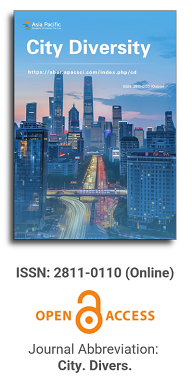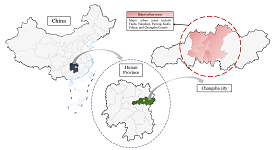
Asia Pacific Academy of Science Pte. Ltd. (APACSCI) specializes in international journal publishing. APACSCI adopts the open access publishing model and provides an important communication bridge for academic groups whose interest fields include engineering, technology, medicine, computer, mathematics, agriculture and forestry, and environment.

As China's pillar industry, the property market has suffered a considerable impact in recent years, with a decline in turnover and many developers at risk of bankruptcy. As one of the most concerned factors for stakeholders, housing prices need to be predicted more objectively and accurately to minimize decision-making errors by developers and consumers. Many prediction models in recent years have been unfriendly to consumers due to technical difficulties, high data demand, and varying factors affecting house prices in different regions. A uniform model across the country cannot capture local differences accurately, so this study compares and analyses the fitting effects of multiple machine learning models using February 2024 new building data in Changsha as an example, aiming to provide consumers with a simple and practical reference for prediction methods. The modeling exploration applies several regression techniques based on machine learning algorithms, such as Stepwise regression, Robust regression, Lasso regression, Ridge regression, Ordinary Least Squares (OLS) regression, Extreme Gradient Boosted regression (XGBoost), and Random Forest (RF) regression. These algorithms are used to construct forecasting models, and the best-performing model is selected by conducting a comparative analysis of the forecasting errors obtained between these models. The research found that machine learning is a practical approach to property price prediction, with least squares regression and Lasso regression providing relatively more convincing results.
Study on plant diversity investigation and conservation plan-ning in Yiyang City
Vol 4, Issue 1, 2023
Download PDF
Abstract
Taking the urban plants of Yiyang as the research object, the field investigation of Yiyang plants was carried out by using the method of combining route investigation and quadrat investigation, the current situation of plant diversity level in Yiyang City was analyzed, and the planning content and construction strategy of plant diversity protection in Yiyang City were studied, in order to provide reference for the effective protection of plant diversity in Yiyang City. The results showed that there were 145 families, 481 genera and 955 species of vascular plants in Yiyang urban planning area; there are 232 species of garden plant resources in the central urban area, belonging to 62 families. 105 genera; the overall level of plant diversity in Yiyang City is general. Urban landscaping relies too much on exotic species, and the utilization rate of native plants in urban gardens is low.
Keywords
References
- Yi Hong, Luo yunqi, Wu Fei, et al. Review of re-search on urban plant diversity protection. China urban forestry, 2014 (2):14–16
- Liu Zhanglu. Research on the compilation of ur-ban biodiversity conservation planning outline [PhD thesis]. Tai'an:Shandong Agricultural Univer-sity, 2010
- Huang Qingping. Study on urban plant diversity protection planning in Sanming City. Chinese gar-den, 2013 (4):42–47
- Liu di. Research on urban plant diversity protection and planning [PhD thesis]. Hefei:Anhui Agricultural University, 2013
- [Zhang minhuan, Jin Xiaoling, ye ye. Changsha Urban Plant Diversity Analysis and conservation planning research [C].//ornamental horticulture professional committee of China horticultural soci-ety, national flower engineering and technology research center, china ornamental horticulture re-search progress, ornamental horticulture profes-sional committee of China horticultural society, national flower engineering and technology re-search center, 2015:6
- Zhang Meng, Chen Dongtian, Qian Xinghua, et al. Study on urban plant diversity protection planning in Heze City [J]. Journal of Agronomy, 2016 (3):51–56
- Xiang Guohong, Gu Jianzhong, Tu Chaofeng, etc. Study on the protection and utilization of garden plant diversity in Yiyang City. Agricultural science and technology newsletter, 2009 (5):100–103
- Yang Lin, Hu Xijun, Chen Cunyou. Problems and Countermeasures in the application of native plants in Yiyang urban park. Guizhou Agricultural Science, 2016 (3):132–134
- Guowen Yao. Yiyang Planning Journal. Yi-yang:Yiyang Planning Bureau, 2013:6–31
- Overview of Yiyang. China nuclear industry, 2007 (8):53
- Zhang Tao. Urban biodiversity and urban land-scaping. Gansu science and technology, 2011 (5):11–14
- Luo Shuanglong. Current situation and Counter-measures of ancient and famous trees protectio. Green technology, 2011 (11):76–77
- Ye Shuyou. The imbalance between rights and powers in the protection of ancient and famous trees:Based on the analysis of the regulations of Anhui Province on the protection of ancient and famous trees. Journal of Huangshan University, 2013 (4):35–37
Supporting Agencies
Copyright (c) 2023 Saiyuan Peng, Xijun Hu, Cunyouju Chen

This work is licensed under a Creative Commons Attribution 4.0 International License.

This site is licensed under a Creative Commons Attribution 4.0 International License (CC BY 4.0).

Prof. Mehmet Cetin
Kastamonu University,
Turkey
Polish Scientific Bibliography

